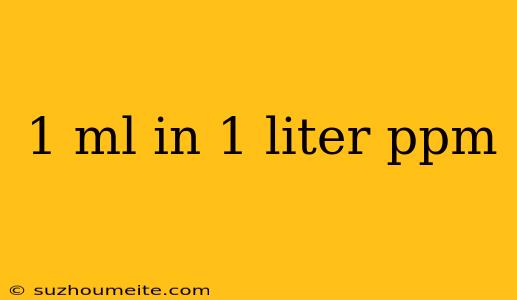1 mL in 1 Liter PPM: Understanding Concentration Units
In various scientific and industrial applications, it is essential to express the concentration of a solution accurately. One common unit of measurement used to express concentration is parts per million (ppm). However, converting between units of measurement can be confusing, especially when dealing with volumes. In this article, we will explore the equivalent of 1 milliliter (mL) in 1 liter (L) in terms of ppm.
Understanding PPM
PPM is a unit of measurement that expresses the concentration of a solution as a ratio of one part of a substance to one million parts of a solution. In other words, ppm represents the number of units of a substance per million units of the solution. For example, if a solution contains 1 gram of a substance per 1 million grams of the solution, the concentration is 1 ppm.
Converting 1 mL to PPM in 1 Liter
To convert 1 mL to ppm in 1 L, we need to understand the density of the solution. Assuming a density of approximately 1 gram per milliliter (g/mL) for water, we can perform the following calculation:
1 mL = 1 gram (since density of water is approximately 1 g/mL)
Since there are 1000 mL in 1 L, the total mass of the solution is:
1 L = 1000 mL = 1000 grams
Now, we can express the concentration of 1 mL in 1 L as:
Concentration = (1 gram / 1000 grams) × 10^6 = 1000 ppm
Therefore, 1 mL in 1 L is equivalent to a concentration of 1000 ppm.
Conclusion
In conclusion, understanding the equivalent of 1 mL in 1 L in terms of ppm is crucial in various scientific and industrial applications. By converting the volume to mass and using the density of the solution, we can express the concentration as 1000 ppm. This conversion is essential in accurately expressing the concentration of a solution, ensuring precise calculations and accurate results in various fields.
